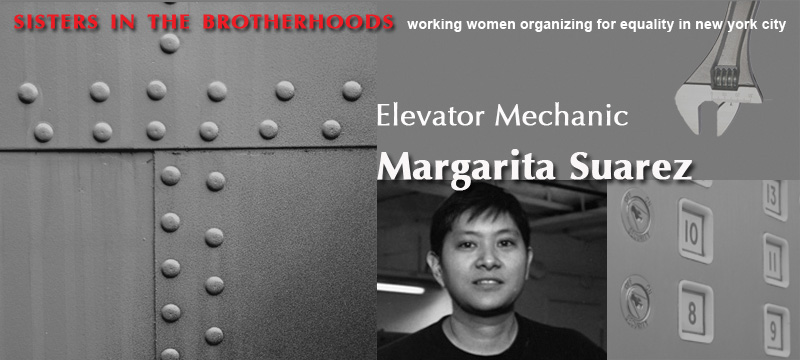 |
||||||
|
||||||
|
Margarita Suarez was born in Manila, Philippines. Her parents emigrated to the United States when she was an infant. She attended Columbia University, where she majored in computer science. In 1989 she landed a full-time job as a systems programmer at Columbia. In 1994 she earned a master’s degree in computer science from Columbia but continued taking classes, studying Spanish and earning a B.A. in women’s studies.
In 1998, while vacationing in Nicaragua, she visited Condega, a small town where tradeswomen—including some from New York City—had established a women’s construction cooperative, Mujeras Constructoras, a decade earlier. Suarez spent a few days in Condega working as a volunteer. After Hurricane Mitch tore through Central America in late fall 1998, she became involved in a fundraising effort to help rebuild houses in Nicaragua. She met some of the tradeswomen who had helped to establish the construction cooperative in Condega—electrician Evan Ruderman and carpenter Rebecca Lurie. In February 1999 she joined a group of six women who spent a month in Nicaragua building the first house for the project. The experience affected her profoundly. She spent about a year re-evaluating her values and worklife before leaving her job in 2000. She took a part-time job at Nontraditional Employment for Women (NEW) coordinating a federal WANTO grant (Women in Apprenticeships in Nontraditional Occupations). While working on a pilot project to recruit women into an apprenticeship program of the electricians’ union, she decided to test her aptitude for the trade. She took the exam for the elevator service and repair division of Local 3, International Brotherhood of Electrical Workers (IBEW) and was accepted into the apprenticeship program. Her apprenticeship went smoothly. After a successful two-month stint at Nouveau Elevator Industries, she took a resident job at New York University Medical Center. After a year on the job she had proved her competency and was given the responsibility for all the hospital's elevators. In 2004 she returned to Nouveau Elevator, her current employer. She also is an instructor for the Elevator Division of Local 3's Joint Apprenticeship and Training Committee and an officer of the Amber Light Society, a club established in 1997 to support the women of Local 3. Suarez attributed part of her job success to the pioneering efforts by the previous generation of tradeswomen. She also maintained that an intelligent approach to problem solving—a strength shared by women as well as by men—is a key asset. “…The best mechanics, the hotshots in my trade, are not the brawniest ones but the brainiest ones—the ones who can fix elevators that no one else can fix,” she said. In her oral history Suarez discusses her career path and her belief that women have a great potential to succeed in her chosen trade.
|
|||||
| ||||||
Copyright 2012 Jane LaTour/Talking History Photo of Margarita Suarez by Gary Schoichet |
||||||
